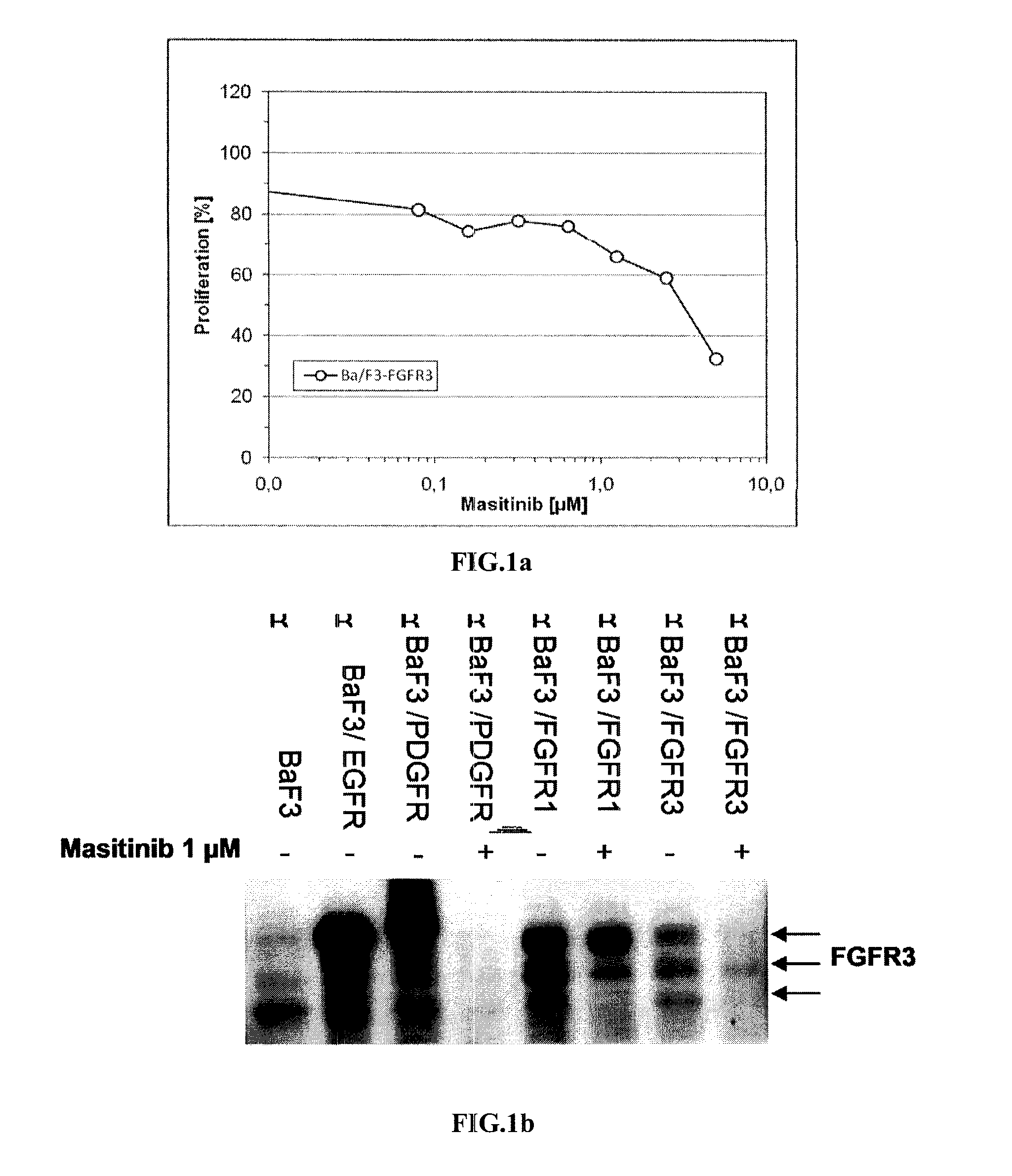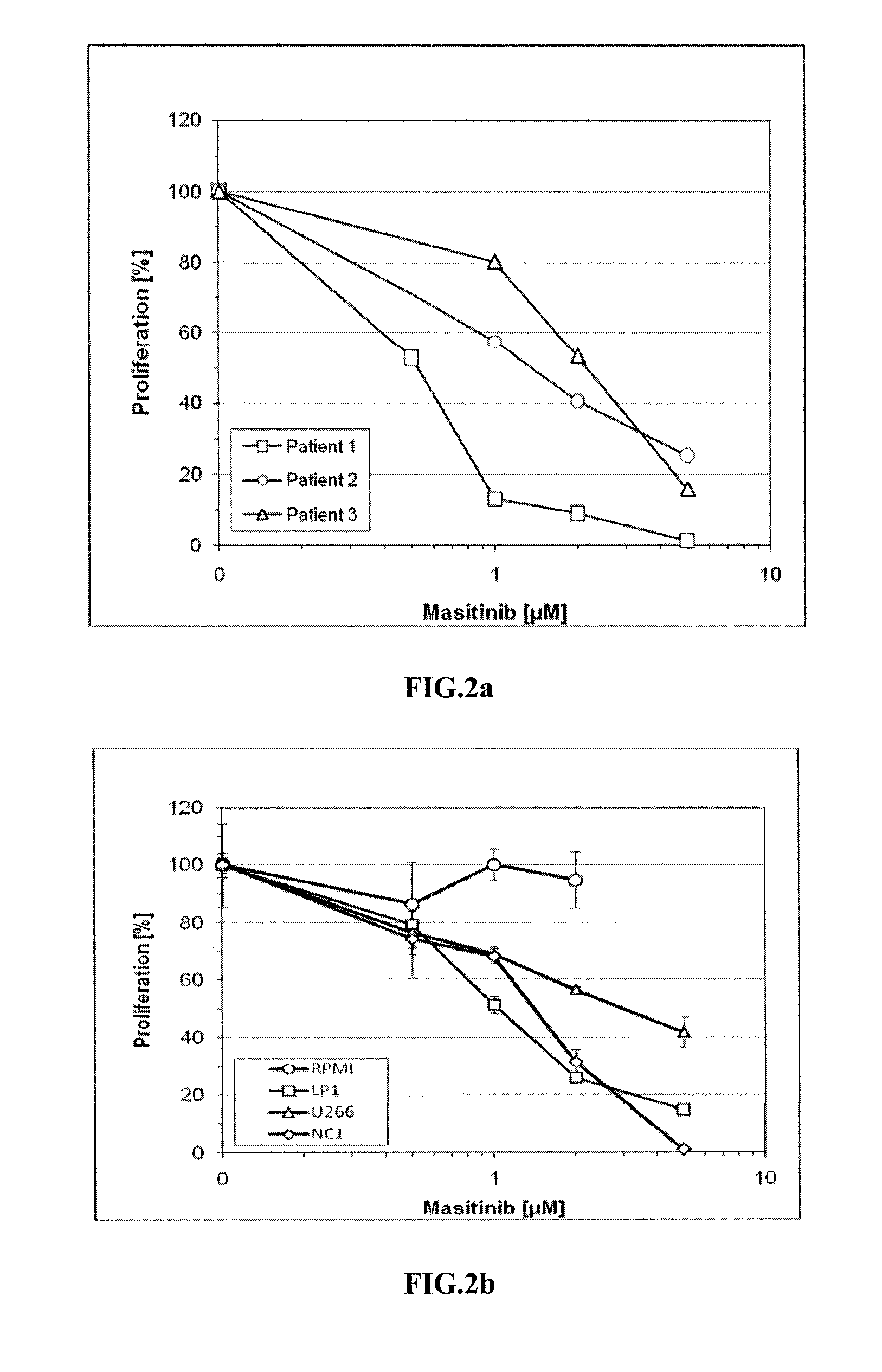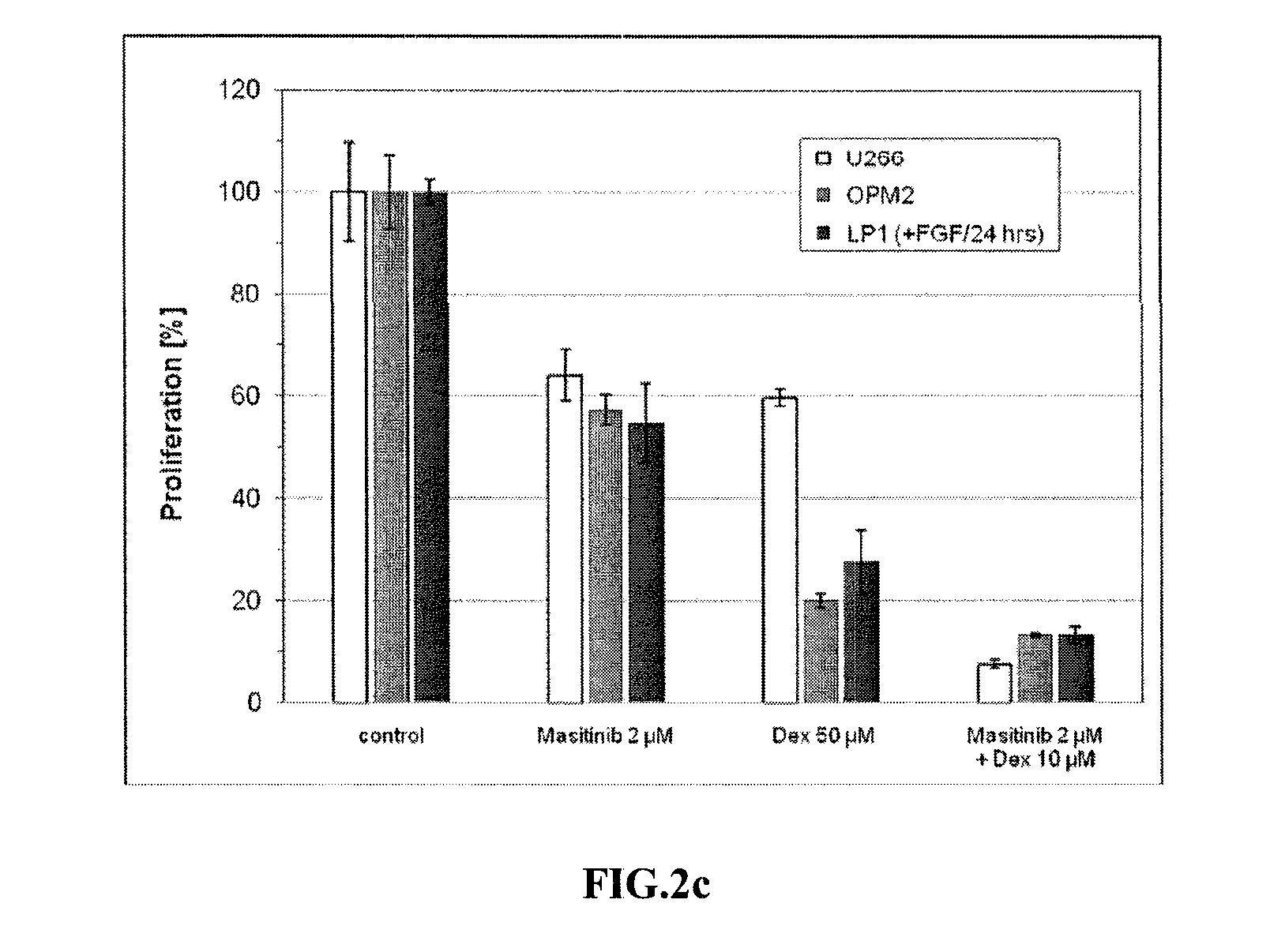Treatment of multiple myeloma with masitinib
- Summary
- Abstract
- Description
- Claims
- Application Information
AI Technical Summary
Benefits of technology
Problems solved by technology
Method used
Image
Examples
example 1
Pre-Clinical Studies
Methods and Materials
Cells:
[0123]Multiple myeloma cell lines RPMI 8226, U266 (t(4;14) negative) and OPM2, LP1, NCI-H929 (t(4;14) positive) were cultured in RPMI medium (Gibco-BRL) supplemented with 10% fetal calf serum (FCS, Life Technologies), 100 units / ml penicillin, 100 μg / ml streptomycin, except LP1 which were cultured in DMEM (Gibco-BRL). Bone marrow plasma cells were CD138-selected using MACS systems (Miltenyi Biotec, Germany).
Proliferation Assays:
[0124]Cells were incubated in the presence of masitinib and / or dexamethasone as indicated for 48 hours and 0.5×104 cells / well were seeded in 96-well microtiter plates. [6-3H] thymidine (Amersham Biosciences, UK) was added (1 μCi / well) for 16 hours. Thymidine incorporation was measured by liquid scintillation counting (Wallace, PerkinElmer). All experiments were performed in triplicate.
Expression of Human FGFR in Ba / F3 Cells:
[0125]The cDNA encoding the human wild-type FGFR3 was subcloned in the LXSN retroviral vect...
example 2
Clinical Evaluation of Masitinib Plus Dexamethasone in Patients with Multiple Myeloma
Methods
[0132]This open-label phase 2 study investigated the safety and efficacy of masitinib in patients with relapsed or refractory t(4;14) multiple myeloma regardless of FGFR3 expression. The main objective was to provide the first evidence of therapeutic effect of masitinib in the treatment of patients suffering from multiple myeloma with t(4;14) translocation. Masitinib monotherapy (9 mg / kg / day) was administered orally until disease progression, after which dexamethasone (40 mg / day, 4 days / month) was added in combination. Included were patients with t(4;14) multiple myeloma in first relapse (second line) or beyond (third, fourth line etc). All patients had detectable and quantifiable monoclonal M-component, a life expectancy of more than 3 months, and ECOG 0-2. Confirmation of multiple myeloma diagnosis was made with detection of the t(4;14) translocation by FISH and PCR, with FGFR3 expression i...
example 3
Clinical Evaluation of Masitinib Plus Bortezomib Associated to Dexamethasone in Patients with Relapsing or Refractory Multiple Myeloma
Methods
[0147]This open-label phase 2 study investigated the safety and efficacy of masitinib administered in combination with other chemotherapy regimens, including masitinib plus bortezomib (Velcade) in association with dexamethasone, in patients with relapsing or refractory multiple myeloma. Initially, this study was to investigate the safety and efficacy of masitinib administered in combination with the chemotherapy regimens of masitinib plus (dexamethasone / bortezomib / thalidomide); or masitinib plus (dexamethasone / bortezomib / adriamycin). However, after early preliminary results both these latter arms were eliminated from the study due to a tendency of higher incidence of adverse events or because these were not considered a gold standard treatment in this pathology.
[0148]Drugs were administered at the following levels:
Masitinib: 9 mg / kg / day, orally...
PUM
| Property | Measurement | Unit |
|---|---|---|
| Time | aaaaa | aaaaa |
| Mass | aaaaa | aaaaa |
| Mass | aaaaa | aaaaa |
Abstract
Description
Claims
Application Information
 Login to View More
Login to View More - R&D
- Intellectual Property
- Life Sciences
- Materials
- Tech Scout
- Unparalleled Data Quality
- Higher Quality Content
- 60% Fewer Hallucinations
Browse by: Latest US Patents, China's latest patents, Technical Efficacy Thesaurus, Application Domain, Technology Topic, Popular Technical Reports.
© 2025 PatSnap. All rights reserved.Legal|Privacy policy|Modern Slavery Act Transparency Statement|Sitemap|About US| Contact US: help@patsnap.com



